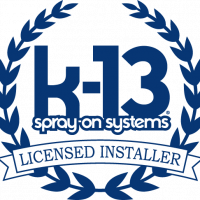As you look through your insulation options for your home, you’ll find you have a number of different choices for the type of insulation and the processes used to install it. Two of the most popular types are blown-in and spray foam insulation in Petaluma, CA.
If you’re going to go with one of these types of insulating materials, you’ll need to understand how they stack up to each other to choose the best for your particular needs. With this in mind, here’s a quick overview of each of these insulation materials, their strengths and how they differ from each other.
Blown-in insulation
Blown-in insulation typically comes in the form of fiberglass and/or cellulose, and gets installed in smaller chunks with the use of a machine and a hose that runs up into the attic. This is a process you cannot take on yourself—you’ll need professional insulation contractors to get the job done correctly, safely and efficiently.
Neither fiberglass nor cellulose has particularly good R-values when compared to the R-values of spray foam insulation. Typically you’ll find R-values of about three or four per inch, and sometimes even a little less than that.
That doesn’t mean blown-in insulation can’t be effective, though—you’ll find it does not leave as much of a gap as other types of insulation do, including batt insulation. It is also more environmentally friendly than other types of insulation, because cellulose is made from recycled paper. This helps you cut back on your environmental impact when performing a new insulation job. It is also more cost-effective than a material like cotton.
If you use fiberglass insulation with the blown-in method, there are some potential health risks—breathing in fiberglass particles could result in respiratory conditions. In addition, the insulation isn’t meant for lifetime use—it’ll usually only last about 10 to 25 years, and prolonged exposure of the insulation to moisture could lead to decaying and mold growth, which could also cause respiratory issues.
Spray foam insulation
Like blown-in insulation, spray foam insulation installation requires the services of experienced contractors to complete the job effectively and safely. This type of insulation is usually made of polyurethane. It fills cracks and gaps in spaces to create a hermetically sealed barrier. In fact, when you spray it out, it expands to become up to 10 times its previous size, which is what makes it so beneficial for filling these cracks.
Another big benefit of spray foam insulation is its R-value, which is the highest you’ll find in the world of insulation. Closed cell spray foam delivers an R-value of about six or seven per inch. What’s more, this benefit will last a lifetime—up to 80 years, so long as the insulation is done properly.
Finally, closed cell spray foam offers an effective barrier against moisture, and prevents mold and mildew growth.
For more information about how blown-in and spray foam insulation in Petaluma, CA compare to each other, contact Ace Insulation Inc. today. We look forward to helping you!


